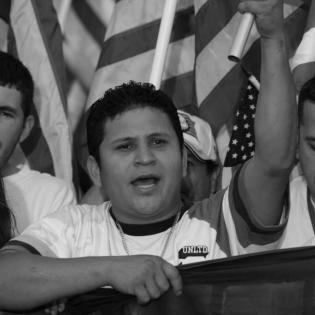Neighbor Interviews
Children interview and write a story about a person in their family or community. They share their stories to celebrate the unique differences in people in the community.
The learner will:
- interview a person in their family or community (at least a generation older than the student) about their youth and philanthropic activities.
- share the stories to raise awareness of the benefits of appreciating different cultures.
- plan and carry out a service project, such as a community day to bring people of diverse backgrounds together for an event.
- chart paper
- materials for making a collaborative book
As an alternative method to the interview, invite four speakers of diverse backgrounds to speak to the group about their personal memories of immigration and family stories. The facilitator may provide some guidelines for the speakers in advance. In addition, the children may prepare some questions to ask.
- culture: the beliefs, social customs, and traits of racial, ethnic, religious, or social groups
- diversity: the presence of unlike elements and features in a group
- ancestors: the family members from whom one is descended. Ancestors usually refer to distant lineage (i.e. further back than grandparents).
- How is a diverse community like a mosaic?
- How do you think a diverse group of people may be better and stronger than a group of people with similar backgrounds?
- How was interviewing seniors different from what you might have expected? What did you learn?
Instructions
Anticipatory Set:
Write the word memories on the board. Ask the children whether they have relatives that like to tell stories from long ago. Ask them what they think about those stories that come from long ago memories. Discuss how memories make good stories of diverse cultures. An older person may tell a story about simple things like walking to school or mealtime in a different country. Because the memories are about a different life, they are interesting and we learn about our cultures.
If possible, have children interview a person in their neighborhood who is one generation (at least 18 years) older than them. This interviewee could be an older friend or family member, older community member, or a teacher.
Children should ask their interviewees about their family history and national origins. Make sure they ask about the ways they like to "give back," or contribute to the common good. Supervision should be provided for all interviews between children and non-family members, or, if possible, these interviews may take place over the phone.
To prepare children for their interviews, move them into groups of three and have them brainstorm interview questions.
Share potential questions together, and write the best ones on chart paper.
Stress the importance of politeness, respect, and listening. Teach them how to introduce themselves on the phone, and role-play the beginning of an interview.
Have children conduct their interviews and bring their notes back to the group. They write a narrative from the point of view of the person being interviewed. Use the writing process to revise and edit the stories.
Bind the completed stories together with construction paper covers. Have children decorate a cover with the theme: “Who Is My Neighbor?”
Philanthropy Framework
-
Strand PHIL.III Philanthropy and the Individual
-
Standard PI 01. Reasons for Individual Philanthropy
-
Benchmark E.4 Give an example of how citizens act for the common good.
-
-
-
Strand PHIL.IV Volunteering and Service
-
Standard VS 01. Needs Assessment
-
Benchmark E.1 Identify a need in the school, local community, state, nation, or world.
-
-
Standard VS 03. Providing Service
-
Benchmark E.4 Demonstrate the skills needed for the successful performance of the volunteer job.
-
-
